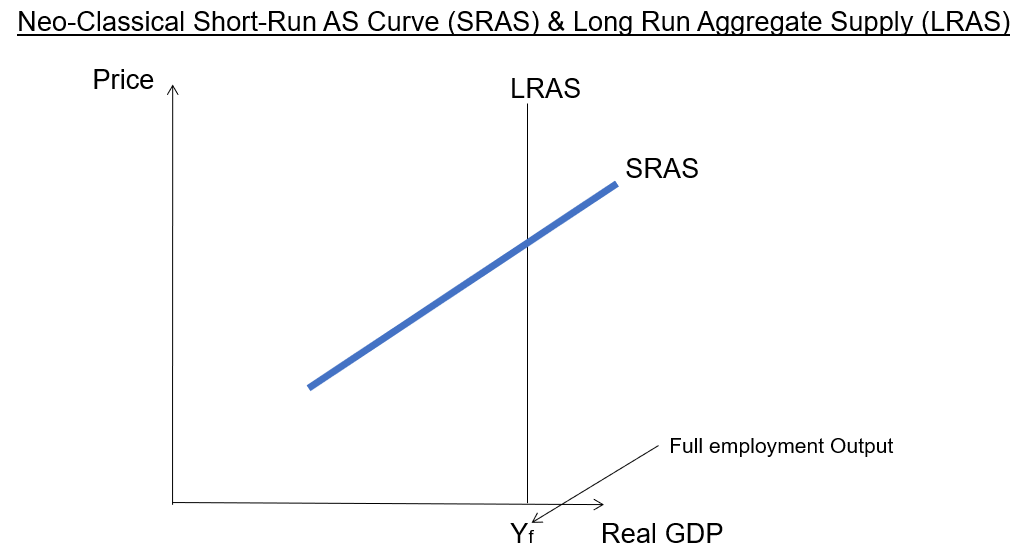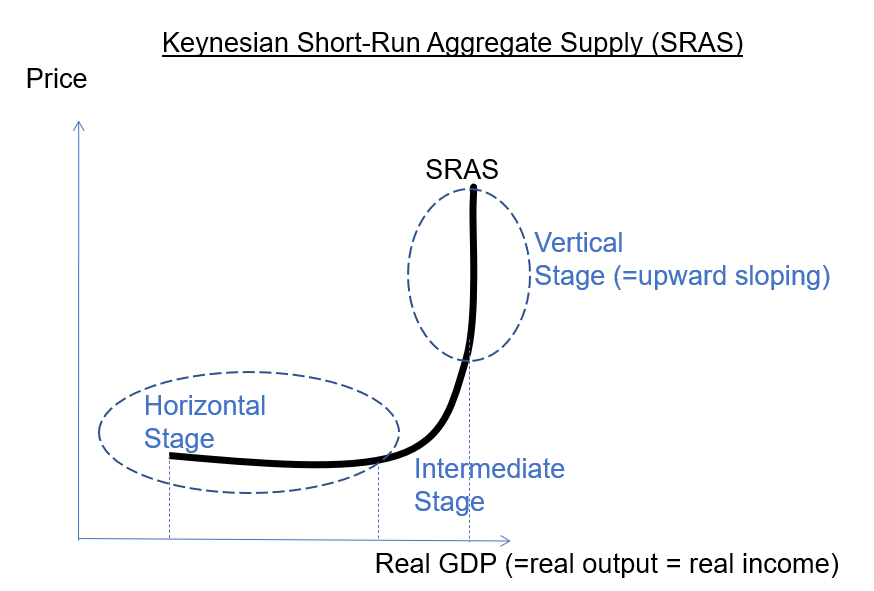Aggregate Supply (AS)
In this section, we shall discuss not one, but two types of Aggregate Supply (AS) curves. They are the Neo-classical AS curve and the Keynesian AS curve.
The Aggregate Supply (AS) is the total value of goods and services produced domestically in an economy at different price levels in a given year. Let’s imagine a single firm trying to make decisions with regards to how much to produce, and how to price them. To come up with an answer, the firm may look at their input costs, as well as an expectation of the profits it can make.
The value of these final goods and services produced by the firm would have already incorporated the costs of their raw materials. These are typically products from their suppliers, we should therefore not “double-count” them at the macro-level.
In other words, at a macro-level, we simply add up all the value of the FINAL goods and services produced domestically by all firms in the economy. This will give us the real Gross Domestic Product (GDP) or real output at that same price level for that year. The AS curve is essentially a measure how this real output varies at different price levels over a particular year.
For producers, the higher the prices of goods and services, the more profits they can make. Hence, AS curve tends to be upward sloping. However, economists disagree on the shape of this upward sloping AS curve in the short run. There are two prevailing schools of thought in this economic debate, and they are: (a) the Neo-classical economists and (b) the Keynesian economists.
The Neo-Classical Short-Run Aggregate Supply (SRAS) Curve
Neo-classical economists believe that the market is very efficient. Hence, government intervention with regards to the allocation of resources in the economy should be minimal.
Neo-classical economists claim that there are two types of AS curves: (i) an upward sloping Short Run AS (SRAS) curve, and (ii) a perfectly inelastic Long Run AS (LRAS) curve.

The Keynesian Short-Run Aggregate Supply (SRAS) Curve

In the Keynesian view, there is no Long Run AS (LRAS) curve. Rather, it has a single Short-Run AS (SRAS) curve that comprises three stages:
- (i) The horizontal stage at low real GDP levels. This denotes the presence of utilised spare capacity when the economy is in recession. It is therefore possible to increase production without increasing costs at that stage.
- (ii) The upward sloping stage at moderate GDP levels. This is the stage where after mobilising most spare resources, additional costs may need to be supplied in order to increase production.
- (iii) The vertical stage where the economy is operating at full capacity. At that point, it is not possible to increase production further, and more Aggregate Demand will simply result in price inflation.
We can combine the Aggregate Supply (AS) curve with the Aggregate Demand (AD) curve. This will give us the AD-AS Model. We can use this model to analyse our economy in the different stages of the business cycle.
